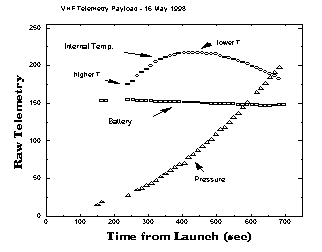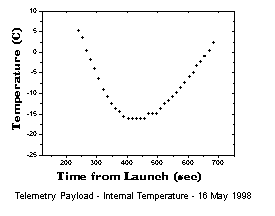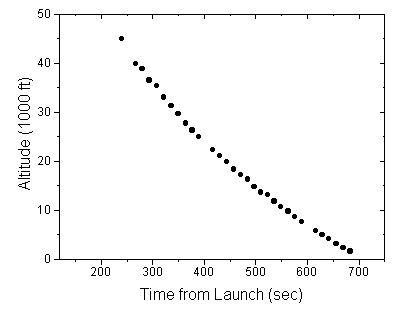Telemetry Payload Results
Summary
First signals from the payload were heard 2 minutes, 2 seconds after
launch, very close to the nominal time for ejection. Initially
the signal strength varied significantly on a time scale of about
one second, suggesting a tumbling payload. After about a minute,
the signal strength variations diminished. The signal could be
heard for most of the descent with a typical hand-held VHF
scanner and a small "rubber duck" antenna.
Telemetry was received until approximately 10 minutes after launch.
Battery voltage remained almost constant, the internal
temperature decreased to about -20C and then increased, and
the pressure readings indicated a pressure of about 1 Atm just
before loss of signal.
It is believed that the starute did not inflate properly causing
the rapid decent.
Raw Data
The raw 8-bit data is sent as hexidecimal using morse code.
Listen to it by clicking
here (360K, WAV) or
here (360K, AU).



Return to MI/WI RFS Home Page
Return to Physics Dept Home Page



